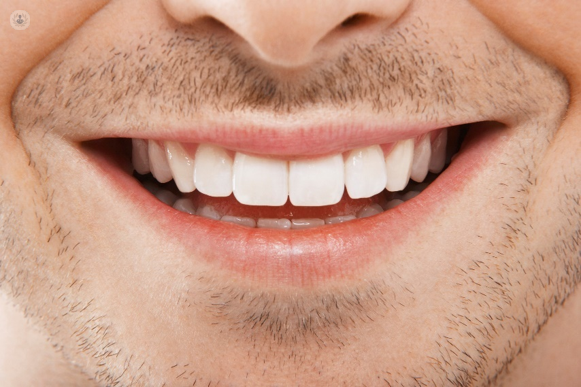Cosmetic Dentist Procedures to Enhance Your Smile
Many people are dissatisfied with the appearance of their smile. Cosmetic dentists provide a variety of procedures to improve the look and feel of your smile. A beautiful smile leads to a more positive attitude and improved health.
Although cosmetic dentistry is not a recognized dental specialty, some dentists choose to further their education in this area. When selecting a dentist for your treatment, be sure to check their credentials. Contact Las Vegas Cosmetic Dentist now!

Dental implants are a common treatment used by cosmetic dentists to replace missing teeth. They offer both aesthetic and functional benefits that improve your smile and make it easier for you to eat and speak. They also provide a strong base for permanent replacement teeth that look and feel like your natural teeth.
The implant process can take a few months to complete, and there are several steps that need to be taken into account. The first step involves the implant being placed in the jaw bone. This can be done using an endosteal or subperiosteal approach. In the latter case, a titanium screw is placed into the jawbone through the gums. The implant will then need to heal and fuse with the surrounding bone, which is known as osseointegration. Once the implant is firmly anchored in place, it can be fitted with a crown.
Your cosmetic dentist will discuss the different options available to you for replacing your missing tooth, but dental implants are often the preferred option. This is because they look and function more like real teeth than other replacement options such as bridgework or dentures. They are also more durable and can last a lifetime when properly cared for.
A cosmetic dentist will use a surgical procedure to place the dental implant into the jawbone. This will usually involve a local anesthetic. In some cases, the dentist will need to graft bone tissue to ensure that the implant can fully fuse with the jawbone. Once the implant has healed, the dentist will place a fixture called an abutment on top of it to connect it to the replacement tooth.
Unlike removable dentures, which can slip out of the mouth, dental implants are fused to your jawbone and become part of your natural teeth. This will prevent your other teeth from shifting, which can cause problems with your bite and the overall health of your smile. They will also eliminate the need for messy adhesives that are required with removable dentures.
Another benefit of dental implants is that they can be used to replace just one missing tooth, multiple teeth or even a full set of teeth. They also provide a stronger foundation for permanent replacement teeth, which will help to prevent bone loss in the area where the implant is placed.
Dental Bonding
Dental bonding is an inexpensive cosmetic dental procedure that can help repair chipped or cracked teeth, close minor gaps between teeth, or change the shape of a tooth. It involves applying a tooth-colored composite resin material directly to the affected teeth to enhance their appearance and is typically done in one office visit.
The dentist will begin the procedure by cleaning and conditioning the tooth’s surface to prepare it for the bonding material. They will then select a shade of the resin that closely matches your natural tooth color. This will allow the result to be as natural-looking as possible.
They will then apply the bonding resin to the tooth in layers, curing each layer with a special light between applications. After the final layer is applied, the dentist will trim and shape it to match the surrounding teeth. They will then polish and buff the bonding material to make it look like a natural part of your smile.
Although dental bonding is less durable than other cosmetic dentistry procedures, such as porcelain veneers, it is a good choice for many patients due to its affordability and versatility. The dentist can also use it to repair old silver dental fillings and protect exposed tooth roots. It is most commonly used on teeth that do not experience significant biting pressure, such as the front teeth.
Bonding is minimally invasive and requires very little removal of tooth enamel, which makes it an excellent option for patients with sensitive teeth. However, because the resin does not completely cover a tooth’s surface, it can sometimes stain if the patient is unable to practice proper oral hygiene habits, such as flossing and brushing regularly.
During your first appointment, a dentist will conduct a full examination of your mouth to ensure that you are healthy enough for the procedure and discuss your cosmetic goals with you. They will recommend alternative cosmetic treatments if they do not believe that dental bonding is the best solution for your needs. They may also recommend teeth whitening as an effective way to improve the results of your dental bonding procedure.
Teeth Whitening
Teeth whitening (sometimes called cosmetic tooth bleaching) is an easy and effective way to remove stains on teeth that discolor over time. It is one of the most popular treatments offered by cosmetic dentists. The procedure typically requires more than one visit to a dental office to achieve the desired result, and it will need to be repeated periodically to maintain its effectiveness.
A tooth whitening treatment involves coating the teeth with a gel containing a bleaching agent. The gel contains a high concentration of hydrogen peroxide that reacts with the stain-causing molecules on teeth to lighten their color. A mouth guard or other protective barrier is often used to prevent the bleaching agent from irritating gum tissue, and a laser or light may be employed to speed up the process.
Whitening is generally safe, but there are a few side effects that may occur. Some of these include sensitive teeth or gum irritation, but they are usually temporary and resolve quickly. Tooth sensitivity can also be a warning sign of a more serious dental problem and should be evaluated by a dentist as soon as possible. The bleaching gel is not suitable for use on fillings, crowns, bridges, veneers, or artificial teeth, and it is generally recommended to avoid stain-causing foods and drinks after a whitening treatment.
Most people are interested in achieving a whiter, brighter smile, but not everyone is willing to make the commitment needed to see a cosmetic dentist for treatment. Many general dentists have the skills and training to provide cosmetic dental treatments, so they are a good option for those who want to brighten their smile without going through a more extensive treatment process.
Although many people believe that cosmetic dentistry is a separate practice from general dentistry, there is really no distinction between the two fields. Both practices focus on improving the appearance of the teeth, and many general dentists have undergone additional training in a range of cosmetic procedures. In fact, many general and cosmetic dentists perform the same procedures, with whitening being one of the most common.
Veneers
Veneers are a cosmetic dental procedure used to cover the front side of the teeth. The dentist applies the veneers by removing a thin layer of enamel from the tooth to ensure it is strong enough to support the veneer. This also ensures that the veneer will not damage the underlying tooth. The dentist then shapes and colors the veneer to match the surrounding teeth. In addition, the dentist may apply a bonding material to the surface of the veneer to help it adhere to the tooth.
Unlike more invasive cosmetic dental procedures, veneers are not permanent and can be removed at a later date. While they are not as durable as porcelain crowns, a set of veneers can last up to ten years with proper oral hygiene and regular cleanings.
Cosmetic dentists use veneers to correct a variety of aesthetic problems including chipped teeth, discolored or stained teeth, crooked or uneven teeth, and even gaps between the teeth. They are also a great solution for people who want to change the shape and size of their teeth without the hassle of orthodontic treatment. Depending on the problem, your cosmetic dentist may recommend either composite resin or traditional porcelain veneers to best address your needs.
The process of getting veneers takes at least two appointments with the cosmetic dentist. At the first visit, the dentist will examine your teeth and mouth to determine if you are a good candidate for the procedure. They will also take X-rays of the mouth and teeth and make impressions to create models of your teeth for the fabrication of veneers. The dentist may put on temporary coverings to protect the teeth while waiting for the veneers to be fabricated.
During the second appointment, the dentist will remove the temporaries and put on the permanent ones. They will then check to make sure they are comfortable and look natural. The dentist will use a tooth-colored cement to attach the veneers to the teeth and apply a light to speed up the bonding process.
Once the bonding has cured, the dentist will polish the veneers and may schedule a follow-up appointment to ensure the teeth and veneers are in good condition. A person with new veneers will need to avoid eating or drinking foods and drinks that can stain them in order to keep them looking their best. In addition, it is important to wear a mouthguard when playing contact sports and to use a splint or retainer at night to prevent clenching or grinding of the teeth, which can damage veneers.


